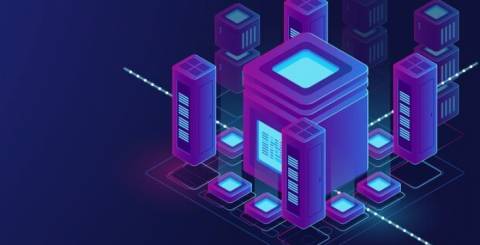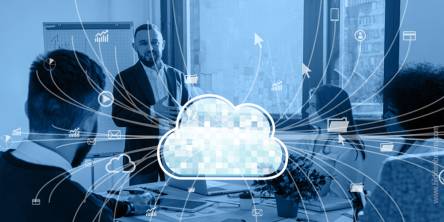Web3 or Blockchain: Building Apps on Blockchain Platforms

Blockchain technology and the concept of a decentralized "Web3" internet have generated tremendous hype and interest in recent years. Beyond cryptocurrencies like Bitcoin, the potential for decentralized applications built on blockchain platforms has been driving innovation. This blog post will explore how developers can build DApps by leveraging the core capabilities of blockchain platforms like Ethereum. It will cover essential concepts, considerations, and the future potential of blockchain application development.
Decentralized Application (DApp) - A Quick Rundown:
A DApp is a software application built on a blockchain platform that has been utilizing its decentralized and immutable properties. Unlike traditional web apps, DApps have no central point of failure or censorship resistance and provide users with full control and ownership over their data. At their core, DApps are simply applications powered by blockchain transactions rather than a centralized database. It will permit trustless interactions without an intermediary.
The Rise of Programmable Blockchains:
The first generation of blockchain networks, like Bitcoin, provided a decentralized digital currency but were not designed for general-purpose computing. The breakthrough came with platforms like Ethereum, which introduced Turing-complete smart contract functionality, permitting any application logic to be built and run on-chain in a trustless manner. This opened the floodgates for DApp development across use cases like DeFi, NFTs, identity, and more.
Renowned Blockchain Development Platforms;
While many blockchain platforms have emerged, Ethereum currently dominates DApp development due to its large developer community and network effects. Some other note-worthy platforms include:
- Solana: A high-throughput blockchain focused on scalability
- Cardano: A proof-of-stake network focused on sustainability and governance
- Polkadot: An interoperability-focused blockchain of blockchains
- Tezos: A self-amending blockchain with an on-chain governance model.
Each platform has its technical tradeoffs, but Ethereum remains the most programmable with the most development tools and resources available.
Building On Ethereum:
The Ethereum blockchain runs on a global network of computers powered by the cryptocurrency Ether. Developers write smart contracts in Solidity, a contract-oriented programming language similar to JavaScript. Smart contracts are deployed to the Ethereum Virtual Machine, which executes the code and updates the state in the shared global ledger.
Some primary steps to building an Ethereum DApp include:
- Designing smart contracts in Solidity
- Testing contracts locally
- Deploying to the Ethereum main network or testnets
- Integrating with frontends using web3.js
- Including payments, oracles, and other advanced functions
It will permit trustless execution of application logic directly on the blockchain. DApps can interact with smart contracts to read and write data and transact in a decentralized manner.
Decentralized Applications:
Use Cases Blockchain DApps are being built across distinct sectors:
- DeFi: Open financial protocols for lending, exchanges, stablecoins, etc.
- NFTs: Non-fungible tokens for digital art, collectibles, gaming assets, etc.
- Identity: Self-sovereign identity solutions for credentials and KYC
- Supply Chain: Transparency and traceability for logistics, agriculture, etc.
- Voting: Decentralized voting applications with verifiable outcomes
- Governance: On-chain governance protocols for DAOs and communities
- Gaming: Play-to-earn games utilizing NFTs and cryptocurrencies
- Social: Decentralized social networks with open protocols
The true potential lies at the intersection of these domains, such as using DeFi and NFT technologies for new virtual economies in gaming and the creator industry.
Challenges Of Blockchain Development:
While promising, blockchain development also faces significant challenges.
- Scalability: Most networks struggle to scale beyond niche use cases.
- Interoperability: Silos between blockchains limit the composability of applications.
- UX Complexity: Cryptographic primitives make for poor mainstream UX currently.
- Regulatory Uncertainty: Regulations around securities and stablecoins are evolving.
- Bugs And Hacks: Smart contracts are immutable; bugs can be catastrophic.
- Adoption Hurdles: Users need cryptocurrency and technical literacy to participate.
Developers must account for these limitations, especially around security and scalability, for production applications.
The Future Of Blockchain Development:
Looking ahead, the next few years will see continued experimentation and maturation of blockchain platforms and DApp ecosystems. Scaling solutions like sharding, state channels, and rollups will help address current limitations.
Interoperability protocols will break down silos. Advances in zero-knowledge proofs, homomorphic encryption, and other cryptographic techniques will enhance privacy, scalability, and UX.
Regulations will provide more clarity around securities and stablecoins. Overall, blockchain development is poised to transform how applications are built, owned, and monetized on the emerging decentralized web. Exciting times are ahead for innovators in this space.
Blockchain Development Tooling:
A robust tooling ecosystem has emerged to support blockchain or software application development services. Renowned tools include:
- Truffle Suite: Development environment, testing framework, and asset pipeline for Ethereum with smart contract compilation, migrations, and build tooling
- Hardhat: Development and testing framework for Ethereum smart contracts similar to Truffle but more lightweight and customizable.
- Ganache: Personal Ethereum blockchain for testing transactions locally
- Remix: In-browser Solidity IDE and runtime environment for deploying and testing smart contracts
- Metamask: A browser extension for interacting with the Ethereum network and DApps, providing wallet functionality.
These tools abstract away much of blockchain’s inherent complexity, speeding up the development process through features like local blockchain simulation and automated contract deployment.
Monetization Of DApps:
While open-source in nature, DApps must also consider economic models to incentivize ongoing development and attract long-term users. Renowned monetization strategies include:
- Cryptocurrency Transactions: Applications take a percentage of all transactions, like exchanges.
- Initial Coin Offerings: Projects sell blockchain-based tokens to raise funds for development.
- NFT Marketplaces: Selling unique tokenized assets with a percentage platform fee
- Subscription And Freemium Models: Paid tiers or memberships for premium features
- Advertising and Sponsorships: Integrating ads or sponsored content
- Marketplaces and Commissions: Taking a cut of all sales on a peer-to-peer marketplace
Careful economic design is important to align the incentives of all stakeholders in decentralized systems.
Conclusion:
Blockchain platforms have opened the door for a new generation of trustless, decentralized applications by leveraging technologies like smart contracts, cryptocurrencies, and distributed storage.
While challenges remain around scalability, usability, and adoption, continued progress on core protocols and developer tools is lowering the barriers to DApp development. For those building on emerging platforms today, the opportunities are vast across domains from DeFi to gaming. Blockchain promises to revolutionize how digital applications and economies are structured in the years to come.
Similar Articles
Enterprise cloud adoption is now a strategic goal. As modern businesses migrate to the cloud for scalability, flexibility, and cost-effectiveness, integration with DevOps principles becomes important. DevOps in the context of cloud adoption is more than just a methodology; it has shown to be a game changer, significantly enhancing efficiency, collaboration, and overall development processes.
Digital transformation is leading the way in reshaping the factories of the future. The term smart factories or industry 4.0, enables manufacturers to refine production processes, manage global market competition, and realize significant returns
In the fast-paced world of photography and videography, staying ahead of the curve requires cutting-edge technology and innovative features. One brand that has been making waves in the industry is Insta360, and for good reason. Insta360 cameras have gained popularity for their exceptional capabilities and user-friendly design.
In the ever-evolving landscape of education, fostering an early interest in coding has become crucial. One innovative tool that has taken the realm of coding education to new heights is the CoDrone. Tailored specifically for young learners, CoDrone not only introduces kids to the fascinating world of programming but also brings their coding adventures to life in the sky
In this digital era cloud computing has become an integral part of business operations. It is flexible, scalable and cost-effective, making it a top choice for many organizations. But with the arrival of various kinds of cloud solutions, selecting which one's right for your business can be a bit overwhelming.
In the dynamic realm of the Internet of Things (IoT), establishing a resilient and efficient infrastructure is imperative for the prosperity of any IoT initiative. Whether working on a smart home system, industrial automation, or healthcare solutions, thoughtful evaluation of diverse factors is indispensable
Over evolution in software testing, two prominent testing methodologies have surfaced: Big Data Testing and Traditional Database Testing. Big Data Testing is tailored for handling the extensive amounts, diverse types, and rapid data flow inherent in the big data environment.
In the fast-paced world of supply chain management, it is vital to coordinate logistics operations for businesses aiming to meet customer demands, reduce costs, and stay competitive.
The handling of projects may be characterized as a laborious and complex responsibility. From the formation of employment positions through allocating resources for managing work in progress, significant amounts of business hours and resources are used.









